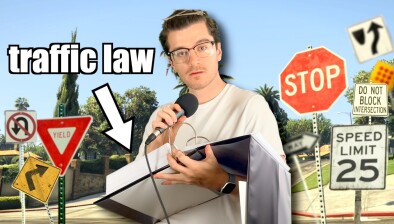Judith Rountree: The new Highway Code 2022 – on yer bike?

Judith Rountree
Judith Rountree, associate at Carson McDowell, offers a Northern Ireland practitioner’s perspective on the new Highway Code in England, Wales and Scotland.
The Department for Transport in England, Wales and Scotland have implemented a revised Highway Code which came into force on 29 January 2022. A total of 10 sections of the Code have been updated with 50 new rules being added or updated. This article does not feature all of the revisions made, focusing on the most notable changes, that relate to the Hierarchy of Road Users which now provides priority to cyclists and pedestrians.
The Code is part of the Government’s commitment to “build back greener” post-pandemic with the aim of decarbonising transport to achieve sustainable travelling with cleaner air and zero emissions by 2050.
Northern Ireland
First things first, the new rules within the Code do not officially apply to Northern Ireland which has its own Highway Code that is “based on the Great Britain version” but with “some differences”. The Department for Infrastructure already provides a yearly publication on the Active and Sustainable Travel in Northern Ireland focused on walking and cycling and we understand is currently preparing a new Road Safety Strategy for Northern Ireland. Following a consultation that began on the 15 November 2021 it is also considering changes to the Northern Ireland Highway Code, although there is no guidance as to what exact rules will be implemented or when. An update is expected by Spring 2022.
When more information becomes available Carson McDowell will revert to explain the detail.
The new rules
The new rules for the rest of the UK came into force on 29 January 2022 with the Hierarchy of Road Users being the biggest change.
The Hierarchy is applied in accordance with a vehicle’s size, for example, the biggest vehicles are at the base of the Hierarchy as the bigger the vehicle, the higher the standard of care that is now applicable. So HGV drivers have a higher level of responsibility than a minibus driver who in turn will have a higher level compared to a regular car who will have a higher level compared to a cyclist, with pedestrians deemed the most vulnerable and are therefore positioned at the pinnacle of the Hierarchy.
As cyclists and pedestrians are deemed vulnerable they are now the most protected road users and additional rules within the Code have been introduced to provide them with further protection as detailed below:
Pedestrians
The revised Code provides further rules to strengthen the position for pedestrians on pavements waiting to cross the road. Rule H2, Rule 8 and Rule 19 of the Code now provide that all traffic should give priority to such pedestrians who are waiting to cross a road either at a junction or a road into which or from which you are turning into whilst driving a vehicle. This means that if a pedestrian has started crossing and traffic wants to turn into a road, the pedestrian has priority and traffic should give way.
Rule 195 also directs that drivers, cyclists and horse riders must give way to pedestrians on a zebra crossing or waiting to use the zebra crossing.
Cyclists
The Code also provides further protection to cyclists as there is now a safe distance and speed to be used when a vehicle is overtaking both cyclists and horse riders. For example, Rule 163 states that drivers should leave a 1.5 meter gap if travelling at 30mph when overtaking cyclists with more space required if higher speeds are applicable. If pedestrians are walking on the road where there is no footpath drivers should leave a 2 meter gap, which also applies to passing horse riders.
Rule 76 also provides cyclists with priority at junctions when travelling straight ahead and Rule 73 permits cyclists to ride in the centre of their lane on quiet roads, in slower-moving traffic and at the approach to junctions.
This means that drivers will no longer have priority at junctions as the cyclist, as the vulnerable road user, can travel wherever they feel safest on the road.
The reaction so far
There have been concerns that the revised Code has not been sufficiently publicised to educate road users on the new rules. Whilst the rules are designed to protect the most vulnerable road users, the lack of widespread publication may actually have the opposite effect. For example, if cyclists follow the revised Code, but motorists are largely ignorant to it, or are confused by it, they may not give way to pedestrians or cyclists as they now should. This provides an increased risk that more accidents involving the most vulnerable road users may take place.
If an accident does occur and liability is in dispute, according to the Hierarchy, the person in control of the biggest vehicle who can do the greatest harm, is likely to be held more responsible than the vulnerable road user.
The level of enforceability is questionable and we will need to wait to see the Court’s interpretation of the Hierarchy as it is noteworthy that the Code also places an expectation on all road users to behave responsibly. If accidents are more likely due to cyclists and pedestrians exercising their new rights under the Code, a dashcam or cyclist bodycam may be an inexpensive option to establish liability in addition to other surrounding factors such as the Hierarchy.

- Judith Rountree is an associate in the defence insurance litigation team at Carson McDowell.







